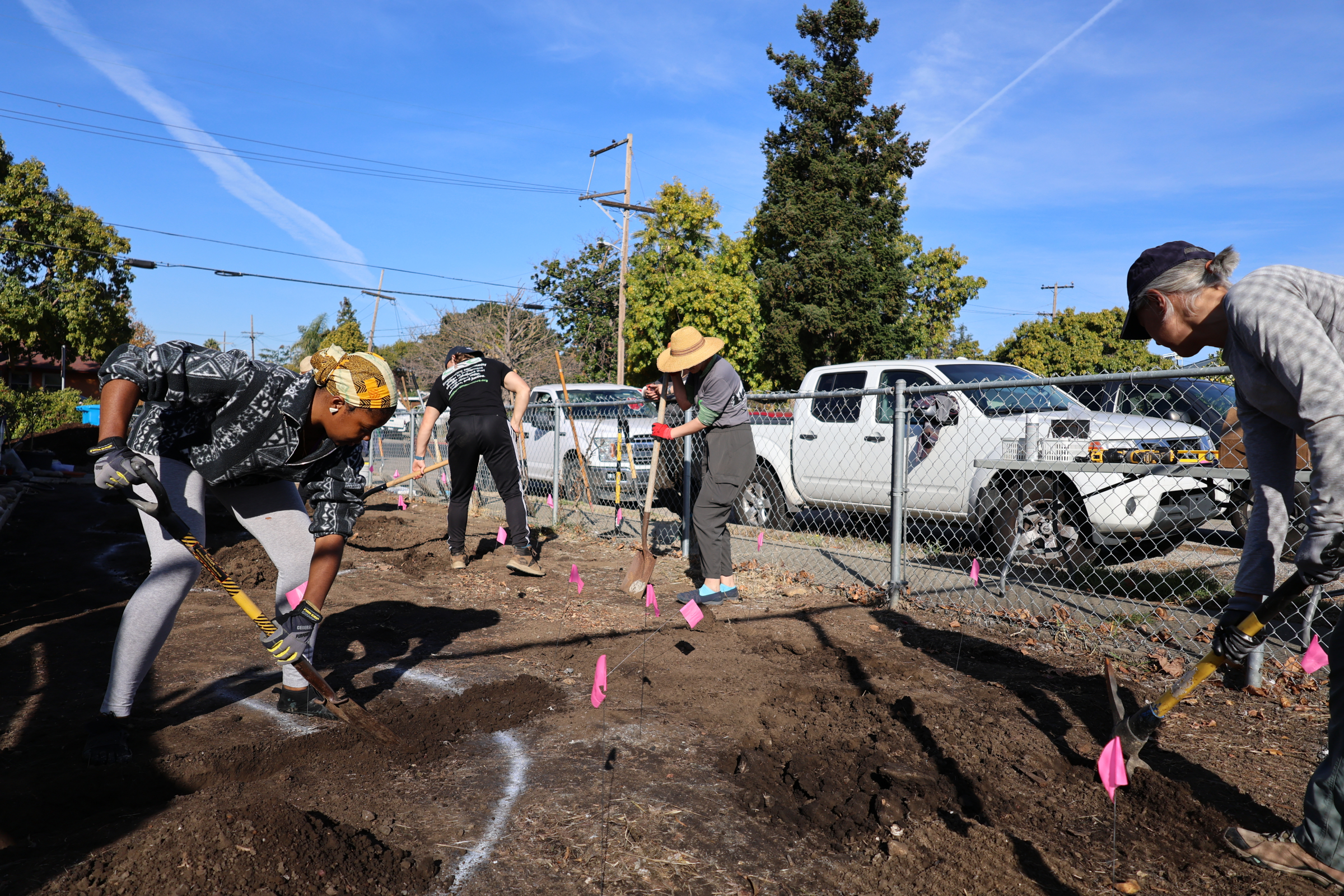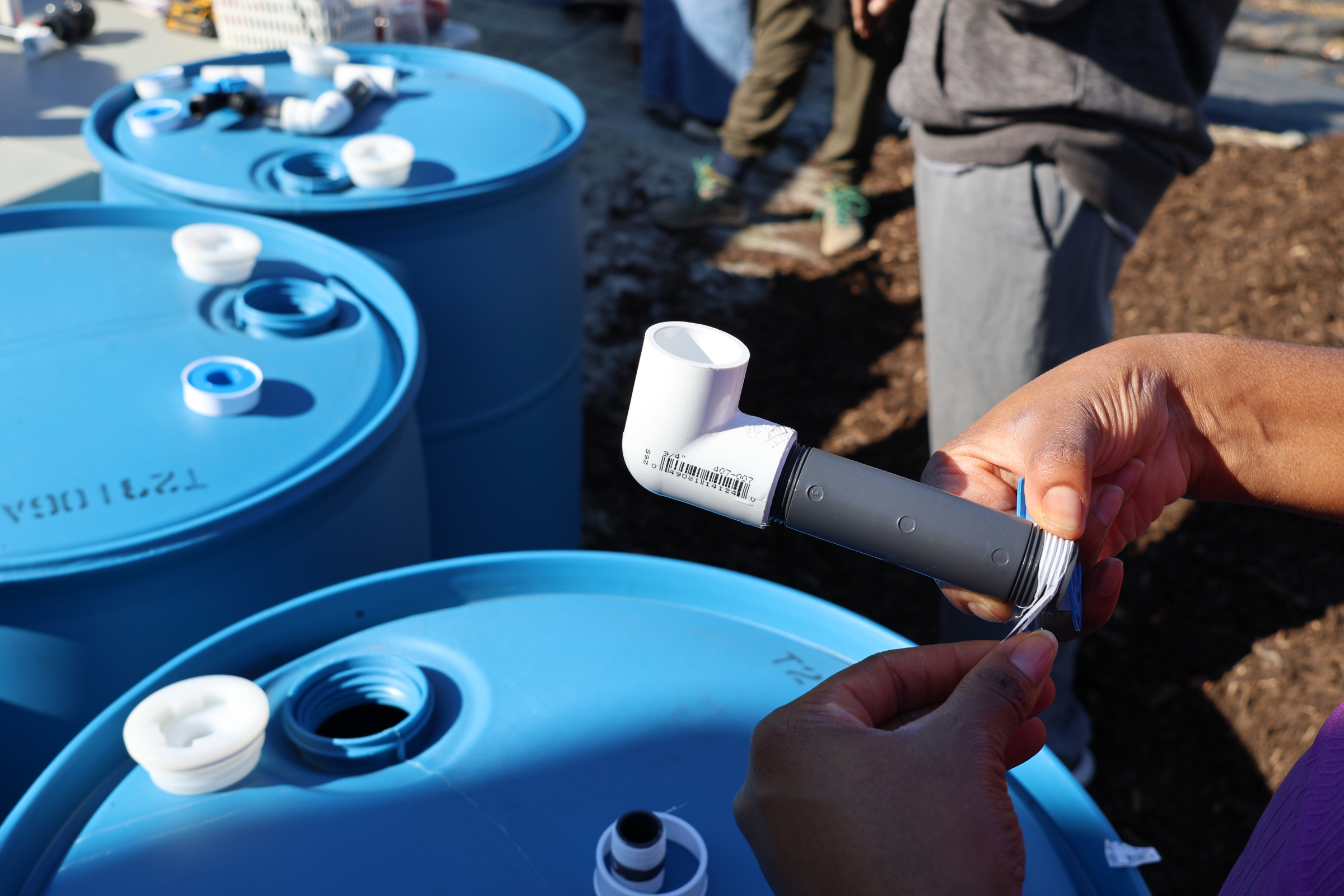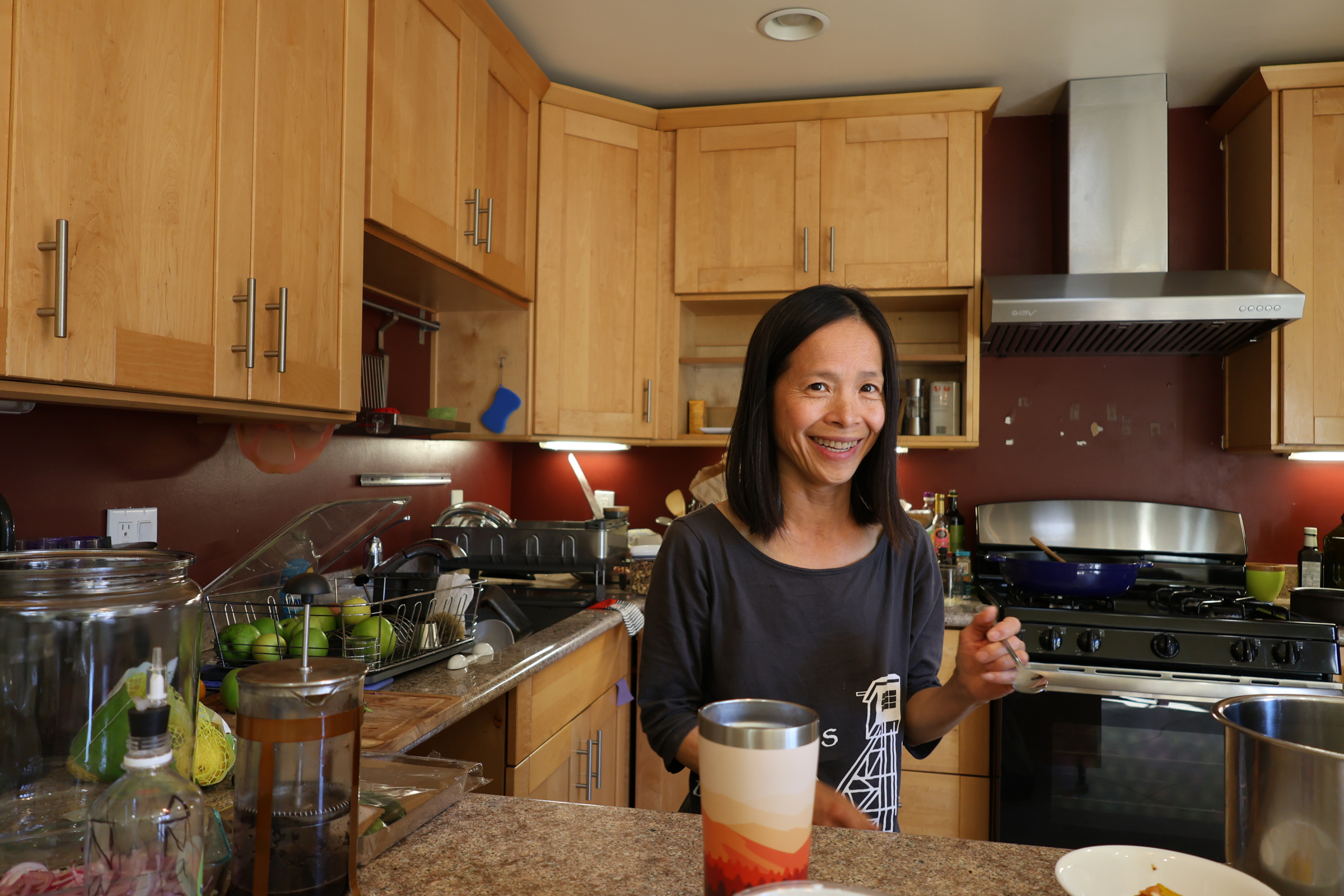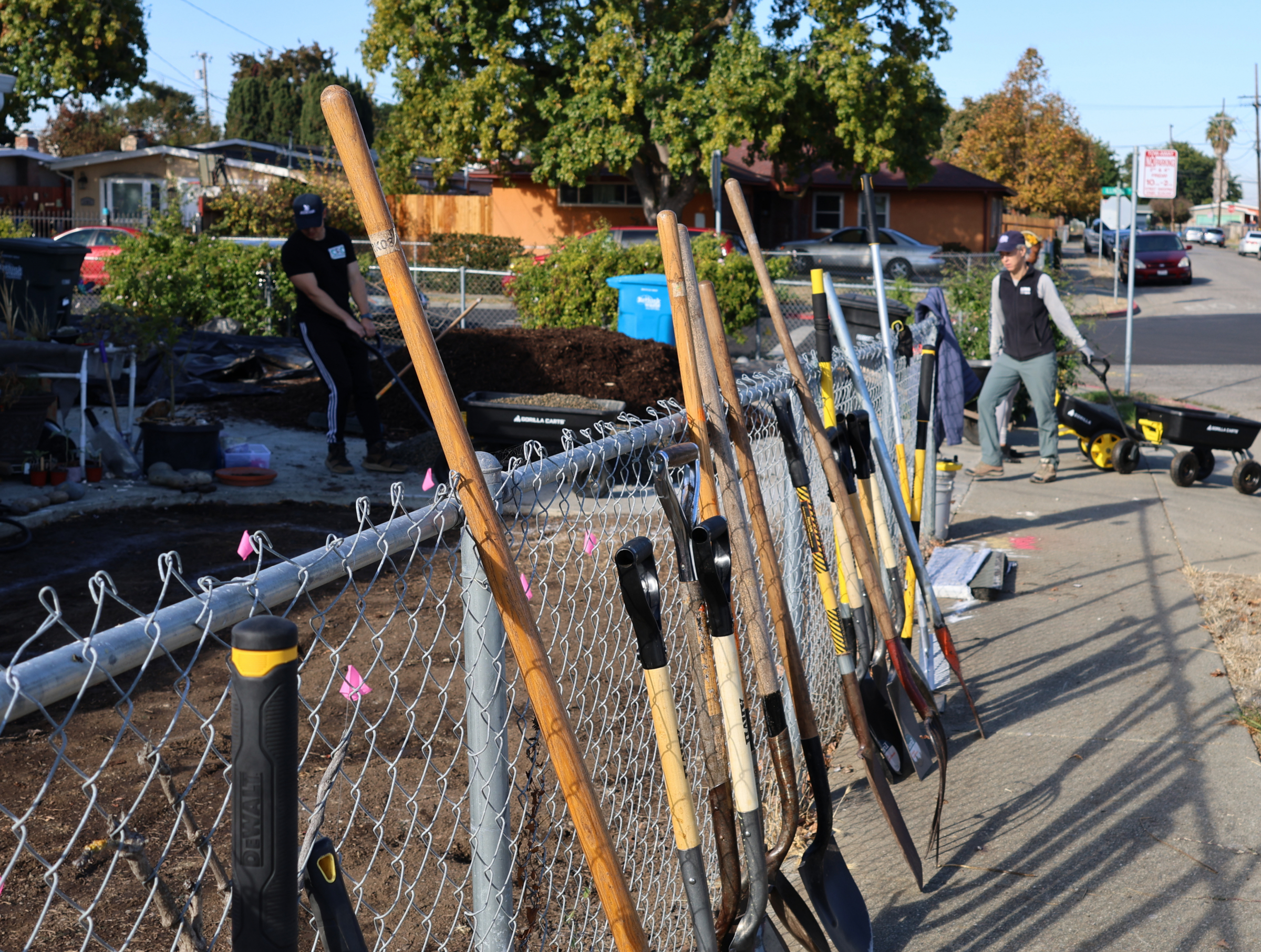Last winter, residents experienced the second largest flood in East Palo Alto history. Now Bay Area nonprofits are installing gardens designed to soak up stormwater and mitigate future flooding.
On Nov. 11, Climate Resilient Communities (CRC), Fresh Approach and Grassroots Ecology broke ground on the first of 25 rain garden systems to be installed for homeowners at no cost. CRC received nearly $1 million in funding for the project from Coastal Communities, an organization working to reduce water pollution.
“To date, there isn't anything else like this in the county,” Reid Bogert, stormwater program director for the San Mateo Countywide Water Pollution Prevention program, said. He said he’s excited to see it used as a model elsewhere.
Efforts to curtail the effects of flooding are more important than ever as California heads into an El Nino year, a period of cooler and wetter weather. Many older East Palo Alto residents still remember flooding in 1998 that resulted in $40 million dollars in damages.
“Rain gardens are an excellent nature-based solution to our changing climate that addresses multiple community priorities at once,” Violet Wulf-Saena, founder and executive director of CRC, said in a press release.
Why a rain garden
Rain gardens are shallow depressions filled with native flood-tolerant plants. They are designed to trap stormwater and send it underground faster. Rather than overflowing out of rain barrels, pooling around the house, or running off into the bay, stormwater accumulates in the gardens, where it's filtered by the soil and returned to the groundwater supply.
In this way, the gardens contribute to a healthy ecosystem. According to CalRecycle, 70% of pollution in surface water comes from stormwater. Traditional stormwater systems don’t have a method for filtering this polluted runoff.
At a household level, rain gardens make a difference by preventing costly consequences of flooding, like leaks and rotting walls. The visually-appealing protection they offer can also increase property values. This is especially valuable to East Palo Alto residents who have expressed a fear of displacement in what is seen as the last affordable neighborhood in the Bay Area, said Cade Cannedy, CRC's director of programs.
A community approach
Through a community-driven process led by CRC, locals identified rain gardens as a way to address their concerns about flooding and gentrification in the neighborhood. CRC held six workshops attended by over 150 community members to spread the word about the initiative.
Quynh Pham never considered a rain garden until she attended a community fair. At the time, her yard was a stretch of dirt covered with tarp. Pham knew she didn’t want a lawn -- it would require too much water -- and was searching for an alternative. But as a single mother and homeowner, there were always priorities besides landscaping to worry about. When she learned she could have a garden installed for her, she jumped at it.
On the day of the groundbreaking, Pham’s home fills with a dozen gardeners from the partner organizations. A trail of signs announcing “snacks this way!” and “snacks here!” leads them to a bustling kitchen wrapped in the smell of sauteed onions and sweet potatoes.
Ethan, Pham’s eight-year-old son, is sous chef. He offers the gardeners green apples picked from the tree Fresh Approach helped him plant and directs guests to a spread of figs and cheese he has labeled. Pham, a nurse passionate about nutrition, re-assembles a table outside where her guests can eat. Afterward, she composts their scraps. Pham said that becoming a mother helped her realize her responsibility to help preserve the environment for her son.
A fence separates Pham’s property from an open field bordering the San Francisco Bay. While Pham said she hasn't experienced intense flooding yet, she’s been shown maps that predict up to half of her front yard could be submerged.
As an East Palo Alto resident for the last 15 years, Pham said she feels lucky to be a part of a warm community that serves each other. She praised community organizations for helping people learn about environmental solutions and access resources.
“Having that community outreach introduces you to things that you wouldn't really necessarily think about or can afford. (It) informs a community that normally wouldn't be informed,” Pham said.
Many of the people working on Pham's garden had a connection to the neighborhood. Debbie Nunez, a curious neighbor and friend of Pham, was at the groundbreaking to learn how to conserve water in her own yard. Volunteer Sydnei Taylor was in the yard digging, just blocks away from her childhood home.
Modeling the future
Models by HighTide Intelligence have shown that East Palo Alto would need over 1,000 rain gardens to prevent wide-scale flooding, Cannedy said. While this is CRC’s ultimate goal, it doesn’t currently have funding for such an expansion.
David Freyberg, a water resources specialist and professor at Stanford University, described East Palo Alto as a “tough location” for water management. The area is exposed to rising sea levels, flooding from nearby creeks, and internal stormwater flooding. Although rain gardens have not been studied intensively as a management tool, Freyberg said they are worth exploring.
Still, Freyberg cautioned that rain gardens present challenges. This is especially true in California, where rain falls for short, intense time periods. Homeowners will need to be okay with brown vegetation in the summer. Upkeep will be needed to prevent trash found in runoff from building up in the gardens. Responding to that demand, a five-person garden ambassador workforce is being trained to install and maintain the gardens and rain barrel systems.
Ultimately, Cannedy hopes the project will demonstrate that rain gardens are cost effective and garner more government support. Often, Cannedy said, the rebates available for rain barrels and gardens aren’t enough.
“These types of solutions are, fundamentally, an opportunity to pay reparations for the years of environmental burden that have been concentrated in these communities and build a world and a society that are much more just and better for everyone,” Cannedy said.







Comments